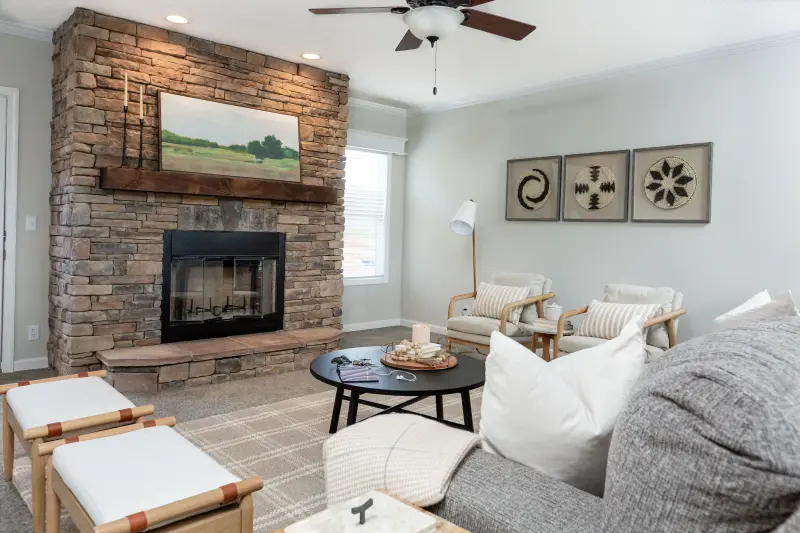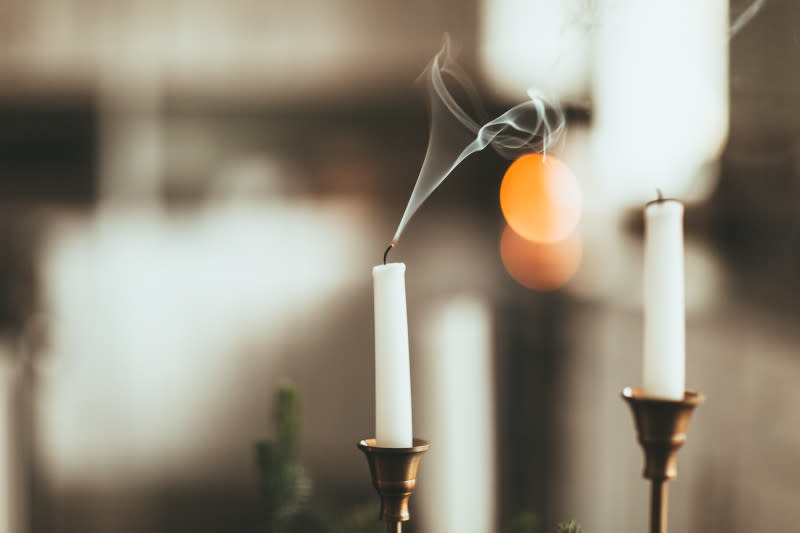Fire Safety and Prevention in Manufactured Homes

Find out how modern manufactured homes are built to national fire safety standards and how to prevent fires in your home.
As a homeowner, you want to make sure your home and family are safe, especially from fires. Modern manufactured homes are constructed with durability, quality and safety in mind, including when it comes to fire prevention. Learn more about how manufactured homes are built to help protect you and several precautions you can take to prevent fires in your home.
Constructed with Fire Safety in Mind
Manufactured homes today have been designed for strict fire safety standards to reduce hazards and help detect a fire early. Since the HUD Manufactured Home Construction and Safety Standard was enacted in 1976, new manufactured homes have been required to follow federal construction and safety codes, including items that help prevent fires. The Manufactured Housing Institute highlights some of these standards, which include:
- Strict standards for preventing the spread of flames and smoke generation in the home’s building materials.
- Egress windows in all bedrooms, which are built to open for easy emergency escape.
- Smoke detectors required inside or immediately adjacent to all bedrooms, the top of the stairs and on the basement ceiling near the stairs if the home has a basement.
- A minimum of two separate exterior doors that are reachable without passing through other lockable doors. In comparison, site-built homes are required to have only one exterior door and do not have a reachability requirement.
Because manufactured homes are constructed to a national building code instead of varying state and local codes, every new manufactured home in the country is held to the same strict fire safety standards.

Home Fire Prevention and Safety Tips
There are several precautions and basic home maintenance to keep in mind to help prevent a house fire. Homeowners can make these practices into habits for fire safety:
- Blow out candles before going to sleep or leaving your home. Opting for flameless LED candles is a great alternative as well and prevents black soot from building up in your home.
- Unplug heaters before bed or leaving the house.
- Keep heaters away from flammable materials like blanket or curtains.
- Don’t leave your stove and oven unattended, and check they’re off before leaving the kitchen.
- Clean your stove of grease and oil regularly to prevent a grease fire.
- Clean your dryer’s lint filter after every load and check your dryer vent monthly for excess debris. Avoid running the washer or dryer while you're away from home.
- If you have children or pets, make sure to block off access to your fireplace for their safety.
- Properly maintain fireplaces through cleaning and servicing regularly.
- If you smoke, smoke outside to reduce risk of a fire starting inside, and make sure cigarettes and cigars are completely out before disposal.
How to Plan for Home Fire Safety

First, you need to have a fire escape plan. When making your plan, consider how to help any children, elderly family members or family members with mobility limitations out of your home. Discuss a designated area to meet outside your home. Make sure your spot is far enough away from your home to be out of harm’s way, such as the mailbox at the end of the driveway or across the street to a neighbor's front yard. Then be sure to practice your fire escape plan routinely so that your family is aware of what to do. Also find two ways out of each room in the event the primary exit is blocked by fire or smoke.
Include your pets in the plan too! The American Humane Society also suggests you “put a decal in your home’s front window indicating the number and type of pets you have – Providing this information can cut down on the time responders spend searching your home in the case of a fire.”
Second, keep your fire safety devices up to date. Be sure you have multiple smoke detectors installed throughout your home and test them monthly. And at least twice a year, check the batteries and replace them as needed.
Your fire extinguisher(s) should be easily accessible in your home. Good places to have them close by include in your kitchen, near fireplaces and near a grill on your porch or deck. Have your fire extinguishers serviced and refilled when needed and inspect they are in good condition often. You can check with your local fire department to see if they provide fire extinguisher refill services.
Other helpful items you can have on hand in case of fire are emergency supply kits with first aid items at multiple exit points if you need to evacuate and smoke-alarm activated nightlights throughout your home. And to protect sentimental items and important documents, you can store them in a fireproof safe along with making digital copies of important documents and photos to preserve them.
It is always smart to take as many precautions as possible and to have plans in place for different emergencies that could happen in any home. Applying these tips can help keep you, your family and your beautiful home safe. Do you want more maintenance tips to help you throughout the year? Let us help you take care of your home with the Homeownership category on our Studio blog.
Are you ready to find your dream home?
Start shopping now or find a home center in your area to learn more about Clayton Built® home options.By entering your email address, you agree to receive marketing emails from Clayton. Unsubscribe anytime.
© 1998-2025 Clayton.

